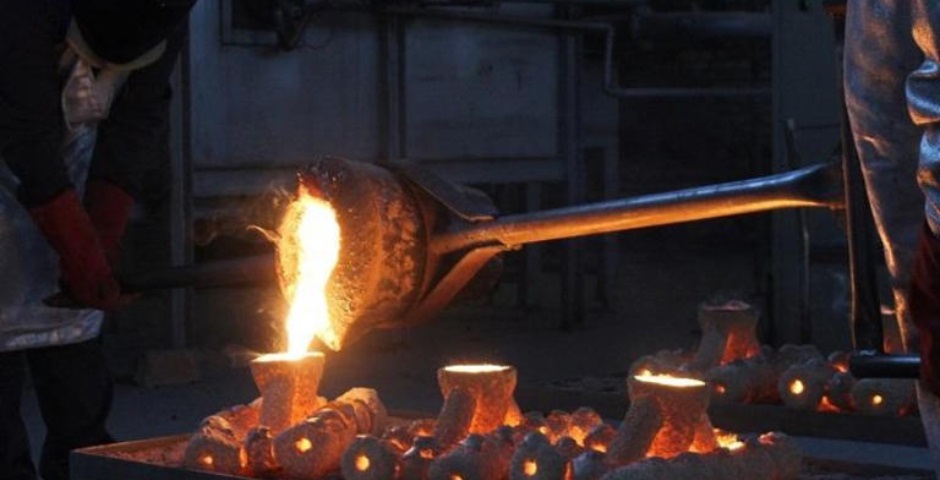Cope and drag in foundry processes are the unsung heroes of metal casting, enabling the creation of complex, precise, and durable components that power industries worldwide. As the upper and lower halves of a mold, these components have laid the foundation for molding techniques that have stood the test of time. From their origins in ancient metalwork to their modern-day evolution alongside advanced technologies, the cope and drag system continues to play a pivotal role in shaping the casting industry. Let’s explore its fascinating journey, cutting-edge techniques, and the innovations propelling it into the future.
The Evolution of Cope and Drag: From Ancient Craft to Industrial Marvel
The story of cope and drag begins thousands of years ago, as early civilizations experimented with shaping molten metals into tools, ornaments, and weapons. Back then, open molds carved from stone or clay were the norm. These molds were primitive, often limited to simple designs and offering little control over the casting process.
The Industrial Revolution: A Turning Point
The Industrial Revolution marked a game-changing era for casting. With industries demanding more intricate and standardized components, the cope and drag method was born. By splitting molds into two halves—cope (top) and drag (bottom)—foundries could achieve greater precision, alignment, and efficiency. This separation also simplified the mold-making process, as patterns could now be easily removed and reused.
Fast forward to the 20th century, and cope and drag became a staple of industrial manufacturing. With the introduction of advanced molding materials like sand and resins, this system enabled the mass production of high-quality castings for automotive, aerospace, and construction applications. Today, it remains a vital part of modern foundries, seamlessly blending tradition with innovation.
The historical significance of cope and drag sets the stage for understanding the techniques that have refined this process into the precision-driven system we know today.
Mastering the Art: Cope and Drag Molding Techniques for Superior Castings
Precision in casting starts with the right molding technique, and the cope and drag system offers several methods tailored to specific needs. These techniques not only enhance accuracy but also cater to the demands of diverse industries.
1. Green Sand Molding: Tradition Meets Versatility
Green sand molding, despite its name, does not involve actual greenery. Instead, it refers to the use of moist sand mixed with clay to create flexible and reusable molds. The sand is packed tightly around a pattern in the cope and drag halves, forming the mold cavity that shapes the molten metal.
Why It Works:
-
Cost-Effectiveness: Sand is abundant and affordable, making this method budget-friendly.
-
Adaptability: Ideal for producing intricate shapes, even in large-scale operations.
-
Sustainability: The sand can be recycled, reducing material waste.
However, green sand molding is not without its drawbacks. While suitable for many applications, it may require additional machining to achieve a smoother surface finish.
2. Resin-Bonded Sand Molding: Precision Perfected
For projects requiring higher strength and dimensional accuracy, resin-bonded sand molding is the go-to method. The sand is mixed with a resin binder, which hardens to form a robust mold capable of withstanding the stresses of casting.
Key Advantages:
-
Improved Surface Finish: Produces smoother castings with fewer imperfections.
-
Higher Strength: The resin enhances the mold’s durability, ensuring it can handle larger or more intricate components.
-
Reduced Defects: This method minimizes gas-related defects like porosity.
While resin-bonded sand offers superior results, its higher material costs and longer setup times make it better suited for specialized applications.
3. Shell Molding: Efficiency in Precision
Shell molding represents a leap forward in precision casting. In this process, a thin layer of resin-coated sand is heated and cured around the pattern, forming a hard shell that serves as the mold.
Why Foundries Love It:
-
Exceptional Accuracy: Ideal for small, intricate parts where tight tolerances are essential.
-
Excellent Surface Quality: Reduces the need for post-casting finishing.
-
Perfect for Mass Production: Its efficiency makes it a favorite in industries like automotive.
However, the initial investment for shell molding equipment can be significant, and its use is limited to smaller castings due to the mold’s thin nature.
While each molding technique has its strengths and challenges, the benefits of cope and drag systems shine through in the quality and efficiency they bring to casting processes.
The Advantages of Cope and Drag: Why It’s a Foundry Favorite
The cope and drag system remains a cornerstone of metal casting for good reason. It has transformed the way manufacturers approach mold-making, offering benefits that streamline production and improve quality.
Simplifying Mold Handling and Assembly
One of the greatest advantages of cope and drag systems is the ease with which molds can be handled and assembled. The two-part structure allows for better alignment, faster preparation, and smoother disassembly, making it ideal for high-volume production.
Precision That Reduces Waste
The accuracy achieved with cope and drag molds means fewer errors and less material waste. Patterns can be designed to exact specifications, ensuring castings meet industry standards with minimal need for corrections.
Versatility Across Materials and Applications
Whether casting aluminum for lightweight automotive parts or steel for heavy-duty machinery, cope and drag systems adapt effortlessly. Their flexibility makes them indispensable across industries with diverse needs.
Despite its many advantages, cope and drag molding isn’t without its challenges. Understanding these hurdles helps foundries fine-tune their processes for better results.
Tackling Molding Challenges: Overcoming Common Defects
Even the most efficient cope and drag systems can encounter issues that affect casting quality. Identifying and addressing these challenges is key to maintaining high production standards.
Battling Porosity
Porosity occurs when gas pockets form inside the casting, weakening its structure. To combat this, foundries employ advanced venting techniques and carefully monitor sand composition to minimize gas generation.
Preventing Mold Shifts
Misalignment of the cope and drag halves can lead to defective castings. This is often addressed through precise alignment tools and rigorous inspections during mold assembly.
Reducing Sand Inclusions
Loose sand particles that enter the mold cavity can create imperfections on the casting surface. Ensuring proper mold packing and using high-quality sand materials helps mitigate this problem.
Avoiding Cracking
Thermal stress during cooling can cause cracks in the final product. Foundries prevent this by optimizing cooling rates and selecting materials with suitable thermal properties.
With these challenges in mind, the industry is turning to new technologies and trends to elevate cope and drag processes to the next level.
The Future of Cope and Drag: Trends Shaping the Industry
Innovation is transforming the casting industry, and cope and drag systems are evolving in exciting ways to meet the demands of modern manufacturing.
Automation Takes Center Stage
Robotics and automated sand-packing systems are revolutionizing cope and drag processes. These technologies ensure consistent results, reduce human error, and speed up production.
The 3D Printing Revolution
Additive manufacturing is redefining pattern-making. With 3D printing, foundries can produce intricate patterns faster and with greater precision, opening new possibilities for complex designs.
Sustainability in Focus
Eco-friendly sand binders and energy-efficient processes are driving sustainability in casting. These advancements not only reduce environmental impact but also enhance the quality of molds.
Lightweight Materials on the Rise
As industries push for lighter, stronger materials, cope and drag systems are adapting to cast advanced alloys like magnesium and titanium. These materials are essential for aerospace and automotive applications where weight reduction is critical.
Data-Driven Insights
IoT and data analytics are enabling smarter casting processes. Sensors embedded in molds provide real-time data on temperature, pressure, and more, ensuring optimal conditions for every casting.
As cope and drag processes embrace these innovations, their potential to reshape the casting industry is limitless.
Moving Forward with Cope and Drag
The cope and drag system is more than just a method—it’s a cornerstone of precision manufacturing that has stood the test of time. By combining traditional expertise with cutting-edge advancements, foundries continue to push the boundaries of what’s possible in metal casting.
As industries demand higher efficiency, sustainability, and quality, the evolution of cope and drag molds ensures that this trusted system remains at the forefront of innovation. Its enduring relevance speaks volumes about its adaptability and significance, making it an indispensable tool in the world of foundries.

